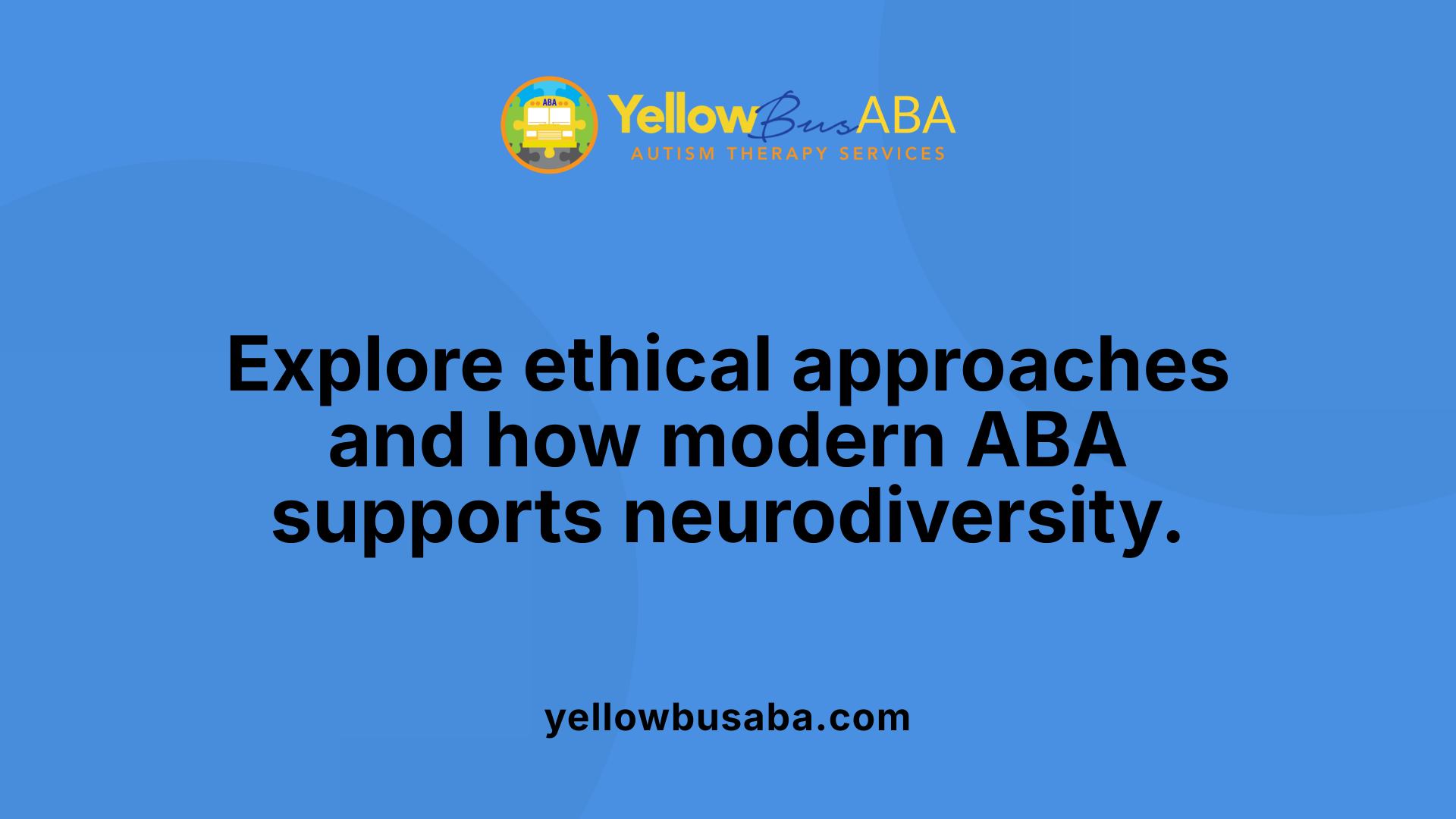Understanding the Foundation of Successful Therapy Habits
Building lasting therapy habits is a crucial step for parents supporting children with autism. This guide explores how Applied Behavior Analysis (ABA) therapy, a widely recognized and evidence-based approach, can empower families to create meaningful, sustainable routines that nurture growth and independence. By breaking down key strategies, understanding therapy goals, and addressing common challenges, parents can confidently foster habits that stick and lead to long-term progress.
What Is ABA Therapy and How Does It Support Children with Autism?
What is Applied Behavior Analysis (ABA) therapy, and how is it used to support individuals with autism?
Applied Behavior Analysis (ABA) therapy is a scientifically supported method that uses principles of learning and behavior to help children with autism improve essential skills. This therapy works by encouraging positive behaviors like communication, social interaction, and independence while reducing behaviors that may be harmful or disruptive.
How ABA uses learning and behavior principles
ABA applies techniques such as positive reinforcement, where desirable behaviors are rewarded to encourage their recurrence. It also uses structured approaches like the ABC model—Antecedent, Behavior, Consequence—to understand and modify behavior. This helps children learn in a way that is tailored for their unique needs.
Settings for ABA delivery
ABA therapy is flexible, taking place in homes, schools, and community settings. It can be delivered one-on-one or in small groups, adapting to the child's daily activities and routines to maximize learning opportunities.
Naturalistic and functional approach
Modern ABA often uses Natural Environment Teaching (NET), where children learn skills during normal play and daily activities. This natural, play-based method helps children apply new skills directly in real-world situations, encouraging generalization and functional use.
Early intervention benefits
Starting ABA therapy early in a child's life can lead to notable improvements in language, social skills, and overall functioning. Early intensive ABA supports children in reaching developmental milestones and promotes greater independence and quality of life.
Core Techniques in ABA Therapy: Building Blocks for Habit Formation

What is Differential Reinforcement in ABA Therapy?
Differential Reinforcement is a technique that encourages positive behavior by praising desirable actions while giving minimal attention to undesirable ones. This approach helps children with autism develop good habits by focusing on what they do right.
How Does Natural Environment Teaching (NET) Work?
Natural Environment Teaching, or NET, involves using everyday settings like parks or family homes for learning activities. This method helps children apply their skills in real-world situations, making learning more practical and meaningful.
What is Errorless Learning?
Errorless Learning creates a supportive environment where mistakes are minimized during learning. By reducing errors, children gain confidence and stay motivated, which improves their ability to acquire new skills.
What Does Tacting Involve?
Tacting helps children understand and describe their surroundings. It improves communication and engagement by teaching kids to label objects, actions, and events they notice in their environment.
How Does Positive Reinforcement Support Learning?
Positive reinforcement adds rewards or praise immediately after a desired behavior. This increases the chances that the behavior will happen again. It is a foundational strategy in ABA therapy to strengthen useful habits.
What is Discrete Trial Training (DTT)?
Discrete Trial Training breaks skills into small, manageable steps and teaches them one by one with clear instructions and prompts. Each step is practiced repeatedly until mastered, helping children learn systematically.
How Does the ABC Model Guide Behavior?
The ABC model stands for Antecedent, Behavior, and Consequence. It helps therapists understand what triggers a behavior (Antecedent), the behavior itself, and what happens afterward (Consequence). This framework aids in shaping or changing behaviors effectively.
What Role Does Modeling Play?
Modeling involves demonstrating a behavior for the child to imitate. It is useful in teaching social skills and appropriate responses by providing a clear example to follow.
What is the PECS Approach?
PECS, or Picture Exchange Communication System, helps children communicate using pictures to express needs or thoughts. This technique supports those who have challenges in verbal communication.
| Technique | Description | Purpose |
|---|---|---|
| Differential Reinforcement | Praise for positive behavior, ignore negative | Encourage desirable habits |
| Natural Environment Teaching | Learning in everyday settings | Practical skill application |
| Errorless Learning | Minimizing mistakes during learning | Boost confidence and motivation |
| Tacting | Teaching labeling and describing | Enhance communication and engagement |
| Positive Reinforcement | Rewarding desired behaviors | Strengthen positive actions |
| Discrete Trial Training | Breaking learning into small steps | Structured skill mastery |
| ABC Model | Understanding triggers and outcomes | Behavior analysis and modification |
| Modeling | Demonstrating behaviors for imitation | Teaching social and functional skills |
| PECS | Using pictures for communication | Support nonverbal communication |
Setting Clear Goals and Recognizing the Benefits of ABA Therapy

What are the main goals and benefits of ABA therapy for individuals with autism?
ABA therapy focuses on developing essential skills in communication, social interaction, and daily living. Its primary aim is to improve these skills while reducing challenging behaviors that may hinder learning or social engagement. This is achieved through evidence-based techniques such as positive reinforcement, functional communication training, and structured environmental supports.
Skill areas targeted by ABA therapy
- Communication: Enhances language development and teaching children how to express needs effectively.
- Social skills: Improves interaction abilities via modeling, role-playing, and social skills training.
- Daily living: Increases independence by teaching self-care habits, hygiene, and routines.
Benefits including cognitive and emotional development
ABA therapy supports improvements in intellectual functioning, memory, and cognitive abilities. Emotional development is fostered by promoting positive emotional connections and boosting confidence through successful learning experiences like errorless learning. This holistic approach helps children engage meaningfully with their environment.
Importance of tailored programs
Therapy plans are individualized to meet each child's unique needs, strengths, and developmental level. Tailored interventions ensure that children receive appropriate support that maximizes learning and skill acquisition.
Impact of early and intensive intervention
Starting ABA therapy early and with sufficient intensity significantly enhances developmental outcomes. Children often show better social engagement, communication, and academic achievement, enabling fuller participation in community and educational settings. This approach helps unlock each child’s potential by building a strong foundation for lifelong learning and independence.
Who Provides ABA Therapy and What Qualifications Do They Hold?
Who typically provides ABA therapy for individuals with autism, and what qualifications do they have?
ABA therapy is delivered by a team of trained professionals, primarily including Board Certified Behavior Analysts (BCBAs), licensed psychologists, and behavior therapists. BCBAs hold a significant role as they design and oversee ABA programs to ensure evidence-based and personalized interventions. To become a BCBA, candidates must complete graduate-level education in behavior analysis, accumulate supervised practical experience, and pass a credentialing examination.
In addition to BCBAs, behavior technicians or therapists, often certified as Registered Behavior Technicians (RBTs), implement therapy plans under BCBA supervision. These frontline providers engage directly with children, applying techniques like differential reinforcement and natural environment teaching.
Supervising professionals guarantee the quality and efficacy of treatment, regularly monitoring and adjusting therapy approaches. Family involvement is also essential; professionals provide training and support to caregivers to reinforce skills and behaviors learned during sessions, fostering consistency across environments. This collaborative approach enhances the overall effectiveness of ABA therapy and promotes meaningful progress for children with autism.
Tracking Progress: How ABA Therapy Measures and Adapts to Your Child's Growth
How is the progress of an individual undergoing ABA therapy measured and adjusted over time?
Progress in ABA therapy is meticulously tracked using continuous data collection methods. Therapists record information about specific behaviors, including their frequency, duration, and intensity during sessions. This detailed behavioral tracking allows for precise monitoring of changes over time.
Standardized assessments, such as the Vineland Adaptive Behavior Scales, are commonly administered at the start of therapy and repeated every six months. These assessments evaluate progress in areas like social skills, communication, and daily living abilities, offering objective benchmarks for growth.
Setting measurable goals is a crucial component of the therapy process. These clear objectives guide treatment and provide targets that therapists and families can work towards. As data is analyzed regularly, treatment plans are adjusted to better address the child's evolving needs, increasing the therapy's effectiveness.
Another important aspect is assessing generalization—the ability to apply learned skills across different environments, such as home, school, or community settings. Observations and teaching often occur in natural environments to support this transfer of skills.
Board Certified Behavior Analysts (BCBAs) play a vital role in supervising the therapy process. They review collected data, make necessary changes to interventions, and communicate progress updates with parents and caregivers. This ongoing evaluation ensures that the therapy adapts responsively to the child's development and fosters continual improvement.
Practical Behavioral Strategies Parents Can Implement at Home

What are structured environments and how do they help?
Creating structured environments involves setting clear routines and predictable spaces for children. This helps minimize confusion and anxiety, making it easier for children to understand expectations and follow daily activities. Structured settings provide consistency which supports behavior regulation and learning.
How can parents use redirection techniques effectively?
Redirection involves guiding a child’s attention from undesirable behavior toward a more appropriate activity. It is a gentle way to reduce challenging behaviors by offering an alternative, engaging option. Consistency and calm communication are essential for this technique to work.
Why is teaching emotional regulation important?
Emotional regulation teaching helps children identify and manage their feelings. By learning coping strategies, children can better control reactions, leading to fewer behavioral outbursts. Techniques include deep breathing, counting, or using calm-down corners.
How can therapy strategies be incorporated into daily routines?
Integrating behavioral techniques into everyday activities reinforces learning throughout the day. For example, Natural Environment Teaching (NET) uses real-life situations like mealtime or playtime to practice skills. Embedding these strategies increases relevance and retention.
What is Functional Communication Training (FCT) and how can parents use it?
FCT teaches children to replace challenging behaviors with effective communication methods. At home, parents can encourage children to use words, gestures, or devices to express needs and feelings, reducing frustration and problematic behaviors.
How does Parent-Child Interaction Therapy (PCIT) support family relationships?
PCIT improves parent-child relationships by teaching parents effective interaction techniques and behavior management. It fosters positive connections, reduces disruptive behaviors, and creates a nurturing home environment.
By applying these strategies at home, parents can foster independence, communication, and emotional control in their children, supporting progress alongside professional therapy.
Navigating Costs and Insurance Coverage for ABA Therapy

Typical Cost Estimates in the U.S.
ABA therapy generally costs around $120 per hour in the United States. This rate serves as a basic guideline but can vary widely based on individual circumstances.
Factors Impacting Cost
Several factors influence the overall cost of ABA therapy. These include:
- The type of therapy program: More intensive or specialized programs may be more costly.
- Provider qualifications: Highly experienced or certified therapists often charge higher rates.
- Location: Urban regions typically have higher fees compared to rural areas.
- Duration and intensity of therapy: Longer or more frequent sessions increase costs.
Insurance Plan Coverage and Mandates
Many health insurance plans offer partial or full coverage for ABA therapy. This significantly reduces the financial burden for families.
State-Specific Legislation and Grants
Some states, such as California, Massachusetts, and Indiana, have mandates requiring insurance companies to cover ABA therapy costs regardless of the patient’s age. Additionally, certain regions provide grant programs to assist families in funding ABA services.
Financial Planning for Sustained Therapy
Because ABA therapy usually requires ongoing sessions to be most effective, families are encouraged to plan their finances accordingly. Exploring insurance benefits, applying for grants, and consulting with providers about payment plans can help manage long-term therapy expenses.
Addressing Criticisms: Ethical and Inclusive ABA Therapy Practices

Are there any criticisms or controversies surrounding ABA therapy for autism?
ABA therapy, while widely recognized for its effectiveness, faces notable criticisms. Historically, some ABA practices included aversive methods—techniques now broadly condemned due to ethical concerns. These past approaches have contributed to a cautious view of ABA within parts of the autism community.
Critics often point to the intensity and rigidity sometimes associated with ABA therapy. The concern is that it may focus too heavily on compliance and behavior modification rather than embracing neurodiversity and individual differences. This can lead to emotional distress or trauma, especially if the therapy encourages masking natural behaviors such as stimming, which many autistic individuals find comforting and essential.
Neurodiversity advocates emphasize honoring individuality and personal identity. They argue that ABA should avoid suppressing personality traits or making autistic individuals feel guilt or shame about their natural behaviors. Instead, therapy must respect and support diverse ways of experiencing the world.
To address these concerns, contemporary ABA practices prioritize ethical and sensitive approaches. These include person-centered care that values the well-being, dignity, and autonomy of the individual. Therapy goals should promote empowerment rather than conformity, focusing on enhancing communication, independence, and quality of life without diminishing the person's authentic self.
In summary, while ABA therapy remains a scientifically supported treatment for autism, it must be delivered thoughtfully. Adopting inclusive and respectful practices ensures that ABA truly benefits those it serves, balancing effectiveness with compassion and respect for neurodiversity.
Building Lasting Foundations for Therapy Success
Establishing enduring therapy habits is a journey that involves understanding evidence-based techniques like ABA, setting clear goals, and collaborating closely with qualified professionals. While challenges and concerns exist, a thoughtful, individualized, and respectful approach ensures that therapy not only helps children with autism develop vital skills but also nurtures their unique identities. For parents, embracing these strategies at home and maintaining open communication with therapy providers creates a supportive environment where progress can flourish and positive habits endure.



.jpg)

.avif)
